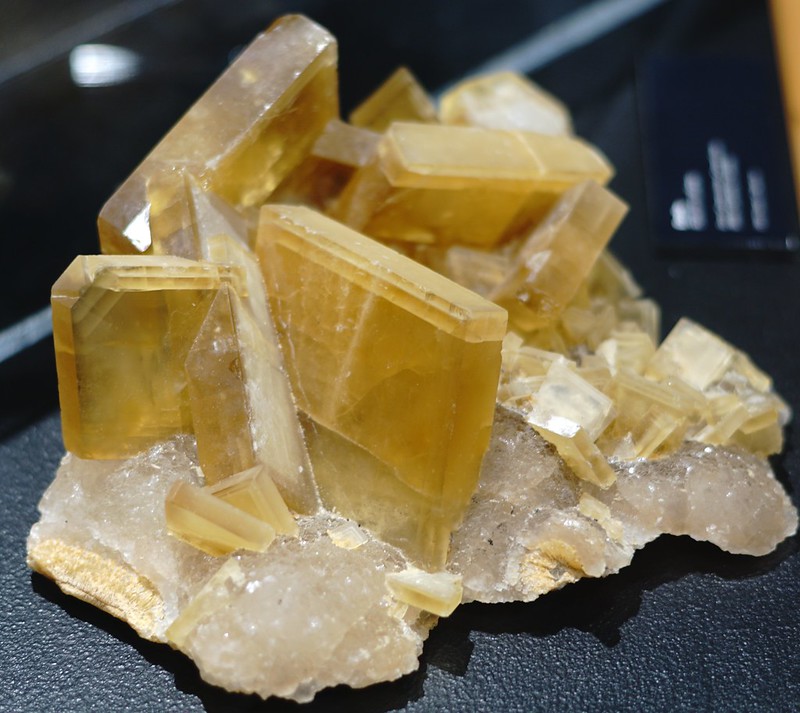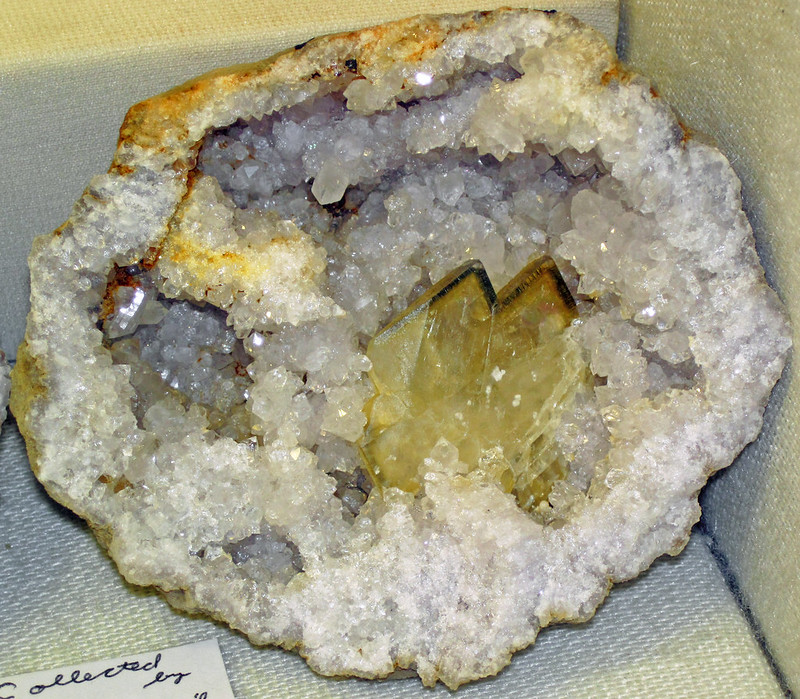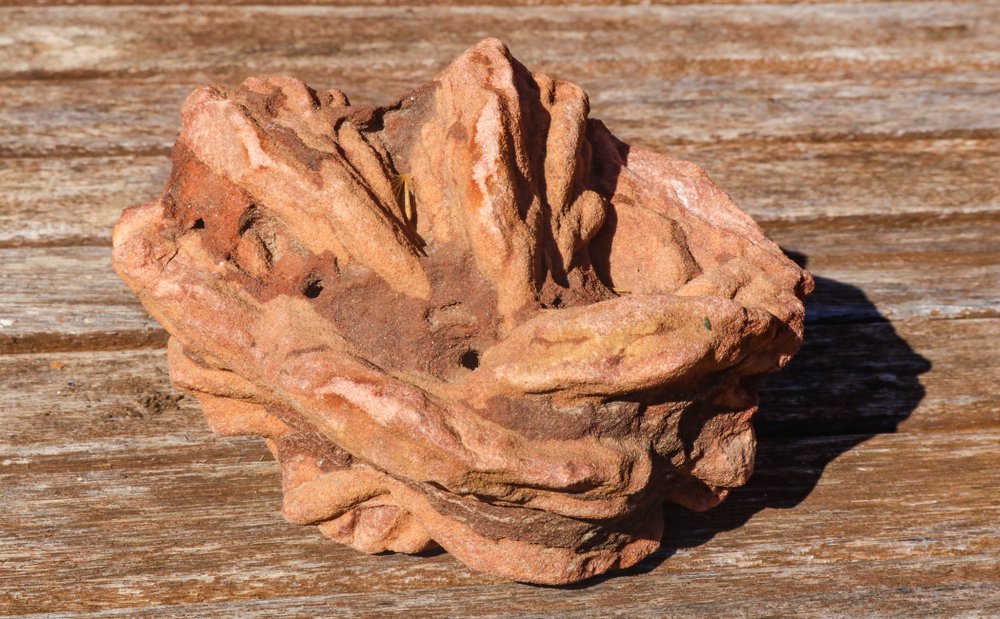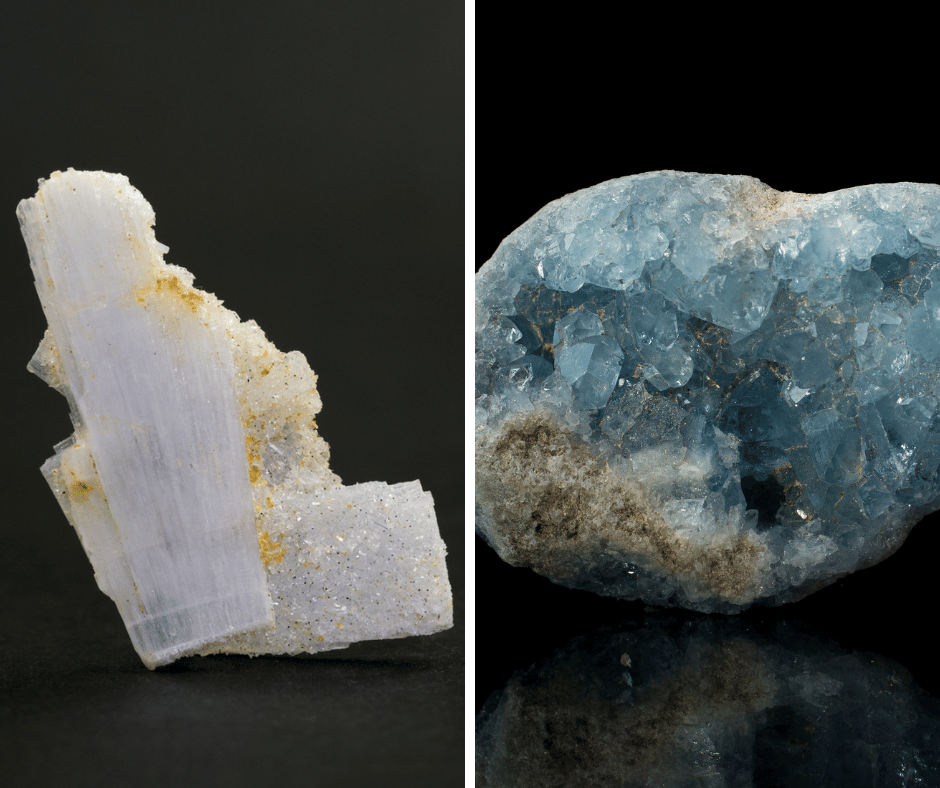Barite is an interesting mineral. For myself, at least, it was one of the first that I picked up that wasn’t intrinsically a gemstone. And while that specimen is long gone, I don’t think I ever quite lost that fascination with the mineral. It’s part of a family of similar minerals as well, all of which are quite interesting.
So, let’s take a closer look to barite, in our guide to collecting it!
What is Barite?
Barite is the mineral form of barium sulfate, BaSO₄. This one is most often seen as white crystals, although there’s quite a bit of variety in the family. It’s a more important mineral than most think at first glance as well, being used in several industries around the world.
Barite is generally found as a white or colorless tabular crystal. These are generally found in chunks of crystals, rather than as single larger crystals. It even takes on a massive form, similar to stones like rose quartz, where it simply keeps growing into itself nigh-indefinitely.

Barite itself is rarely a source of controversy, but its name has been. The name is associated with the Greek word barus, meaning heavy. The original name of baryte was seized upon by the International Mineralogical Association after the initial adoption of barite.
Americans promptly ignored them, since, as you’ll see shortly, we use more of the stuff than anyone else in the world.
Barite is rather soft, but it’s also very dense. It comes in with a specific gravity of 4.2-4.6. By comparison, quartz would normally be considered dense and it only comes in with a 2.65. This, plus the nature of barite mining, is part of what makes it so special for uses other than sitting on our shelves.
How Many Forms Does Barite Take?
For a collector, the most valuable form of barites is almost always crystals, although filled-in nodes of the mineral definitely have their appeal. Slabs can be expensive, and they’re not really suitable for lapidary use. The mineral is simply too soft (3-3.5 on the Moh’s scale) to readily be cut into any decorative form either.
These crystals range from delicate, light tabs to larger prisms with pyramidal points. In some cases, you can find fans of the material with a fibrous nature present as well.

It generally ranges in color from yellow to blue to white, with brown specimens also noted. While the brown ones can be found in the other forms, there is one of particular note: rose rocks.
Not the gypsum ones, which can be found in places like the Mojave and often consist of precariously thin, bladed crystals. Rose rocks are found only in Oklahoma, where they formed out of the remains of an ancient sea. As the waters evaporated, the barite trapped grains of sand, creating the red rosette form found in Cleveland County.

Part of the Family
Barite is closely related to a few other sulfate compounds and is often closely associated with them. The barite series includes celestine, a strontium sulfate mineral that is commonly collected. Celestine can form a solid solution with barite in nature.
The group also includes anhydrite, which is a calcium sulfate compound that differs from gypsum due to lacking moisture.
Oddly enough, crystalline lead sulfate, generally known as anglesite, is also in this same series. This appears to be due to the similarity of the crystals and chemical structure, making it part of the same group.
In nature, these elements are commonly found in association with each other.

More Than Just a Collector’s Item
Not very much of the barite out there ends up in mineral collections.
Instead, it’s an important part of the petroleum industry. The majority of the barite mined around the planet ends up being used as a weighing agent in the mud used for drilling. Here the density is used to ensure that the drilling fluid stays down and provides enough hydrostatic pressure to avoid a blowout.
Barite used for this task is carefully sized and has to be chemically inert. This is no small task in a world that runs on petroleum products, and the US has the largest share of importing barite in the world.
It’s also ground and used as a filler in many different chemicals, ranging from paints to ceramics. Its density also allows it to be used in things like radiation-resistant concrete, where the increased density helps contribute to the protective effect of the concrete.
Where To Find Barite
Barite is found in a few locations. While not a very rare mineral, it occurs abundantly where found, there are still only a few places scattered around to find it. Most of these locations are commercial mines since barite is such a lucrative commodity. Many of these mines are no longer in operation, but it’s generally not safe to go poking about if you don’t know what you’re doing.
Unfortunately, there’s even an issue where barite wasn’t being mined for industrial use. There is an area in South Dakota, called Elk Creek, that produces some of the best golden yellow barite specimens in the world. This is virtually all private land and with high-end barite specimens selling for thousands of dollars, just gaining access is often a costly affair.
Roadcuts are going to be your best bet for this particular mineral in most locations. While I’m going to name some localities, I haven’t been 100% able to confirm anything as far as legality is concerned. Always make sure you can legally collect wherever you’re headed.
Colorado has the highest concentration of known localities and is definitely a good place to start. The following states also house this mineral:
- Connecticut
- Georgia
- Nevada
- Oklahoma
- South Dakota
- Washington
Oklahoma is home to the rose rock form of barite, making it a bit unique on this list. There are plenty of places to dig these out there, most on public land as far as I could tell.
If you are able to find a good spot, it may be best to keep it close to your chest, especially for higher-grade crystals. There’s a lot of financial incentive to seek out certain varieties of barite, and the last thing you want is somebody making a private claim on it.
That said, you can certainly find it in the US, but you’ll likely have to track down legal areas near some of the better veins to bring it home. It’s a lot of work, but if you’re willing to undertake it and succeed, the rewards can be great!
- Online rock and mineral club for collectors of all levels!
- Find community with like-minded rock and mineral enthusiasts.
- Monthly Giveaways!
- Free Access to Entire Digital Library of Products (current and future products)*


